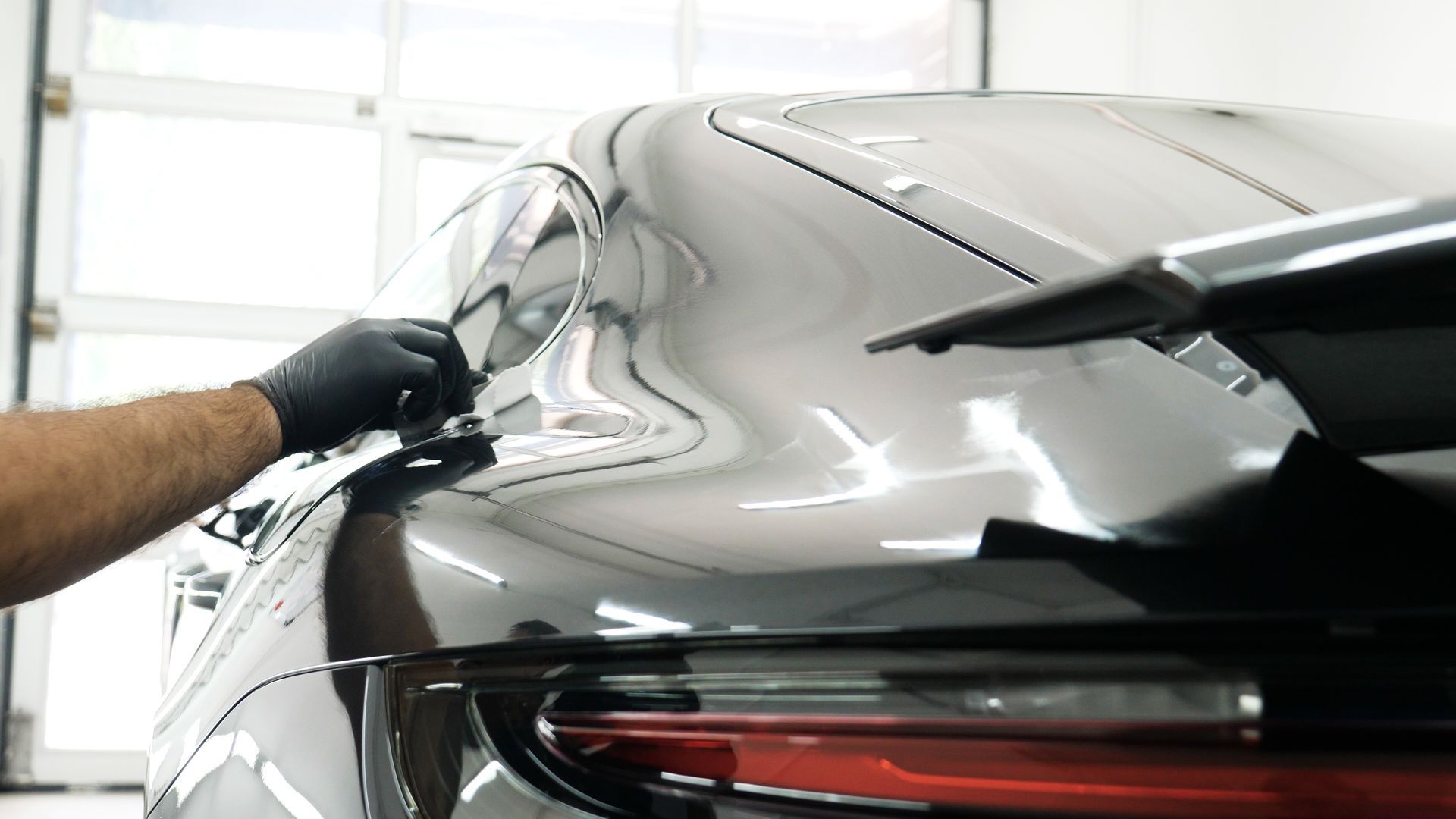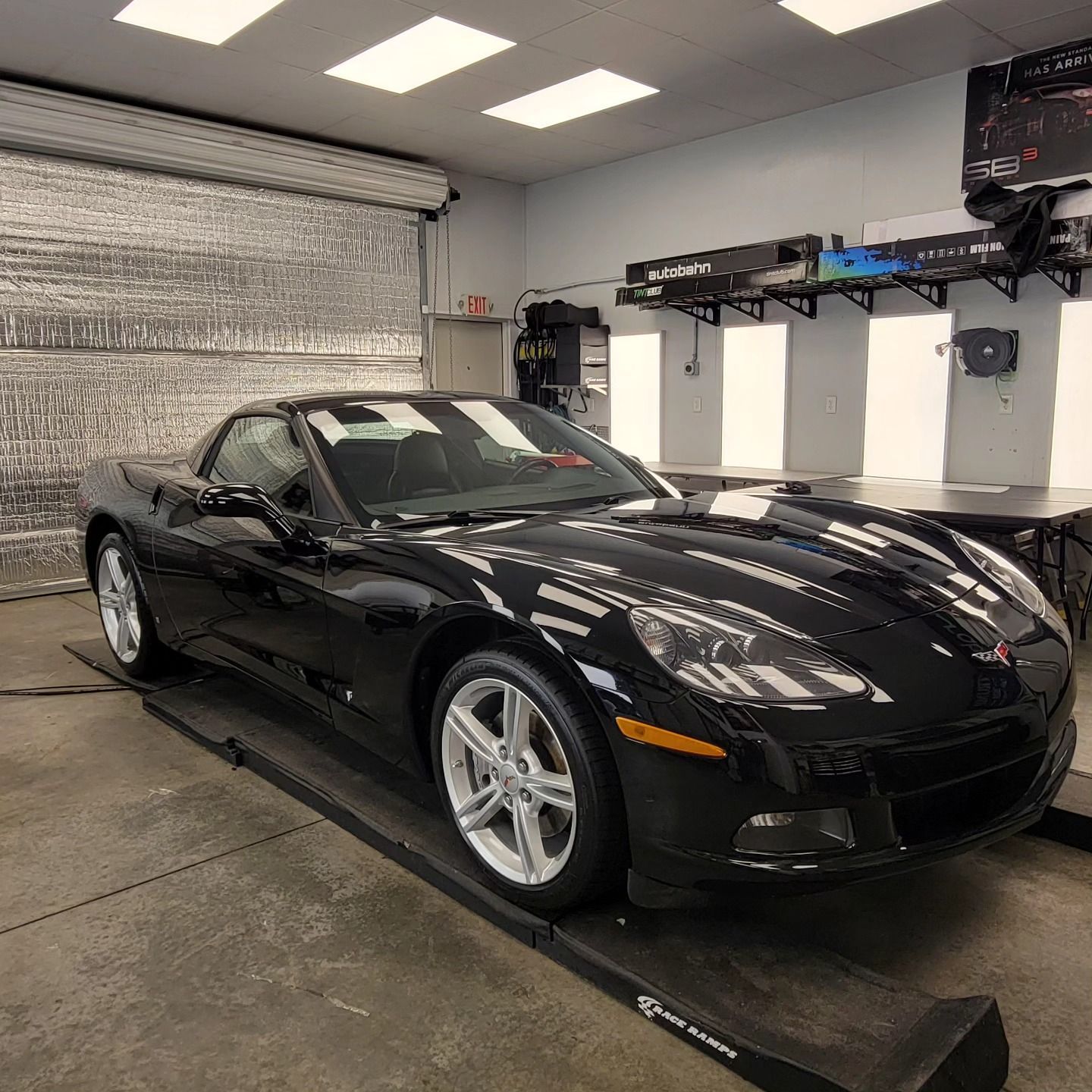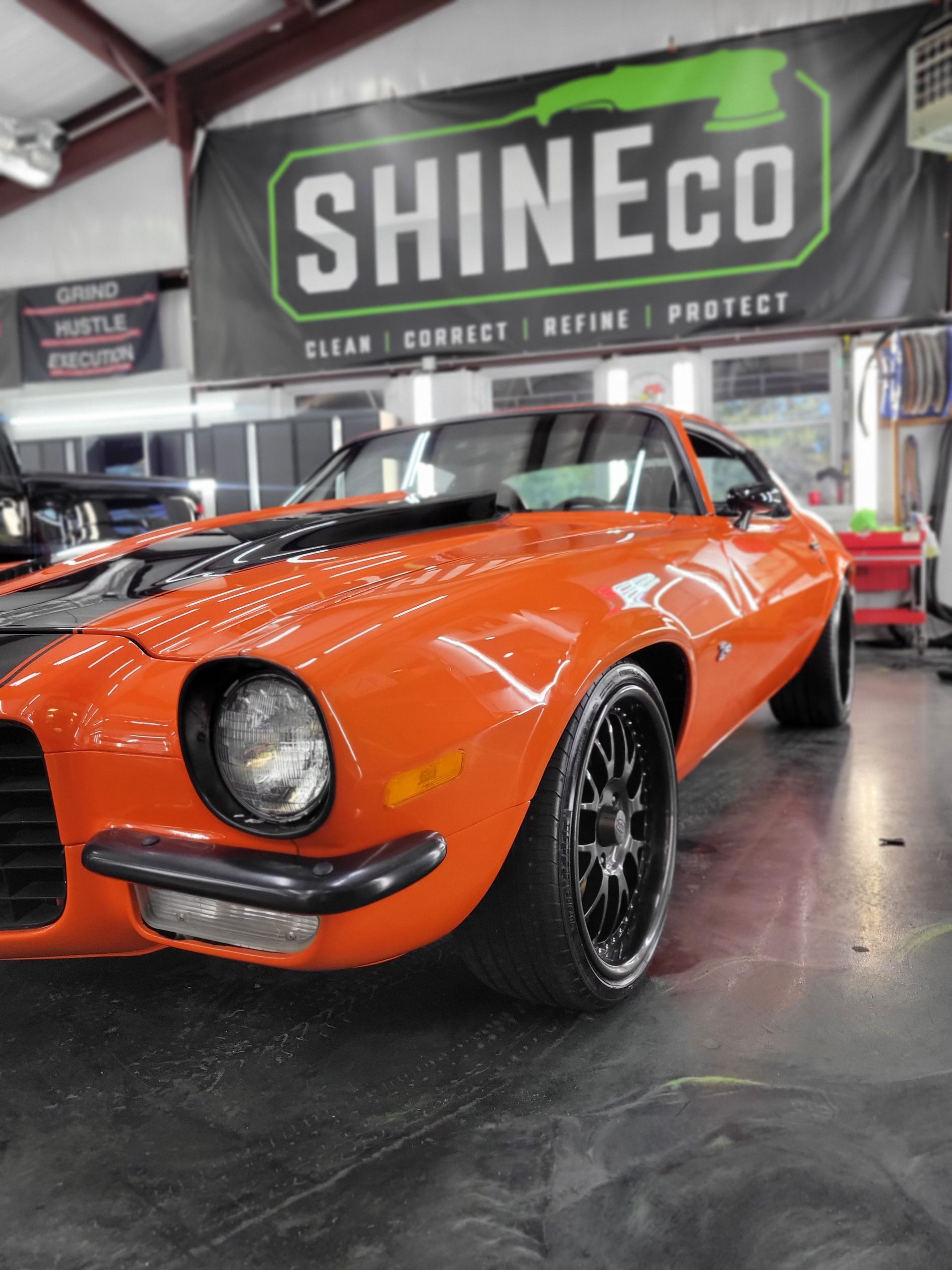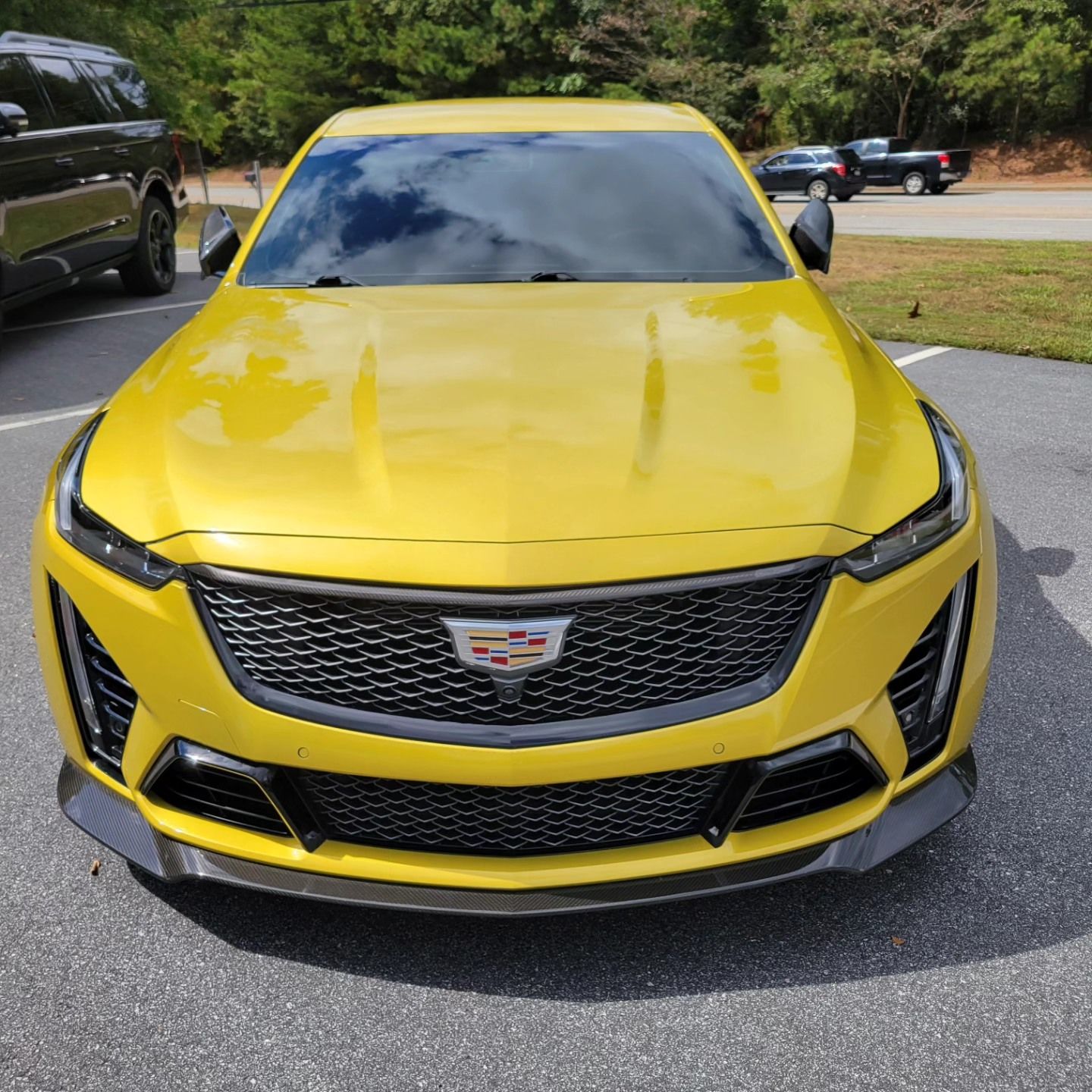If you’re a car owner in Spartanburg or Greenville, you’ve likely heard about ceramic coatings. Whether it’s through the eye-catching before-and-after photos on social media or a friend at a local car meet talking about how his vehicle looks like new, the buzz surrounding ceramic coatings is undeniable. But what exactly are ceramic coatings, and why are they generating so much attention in the auto care world? Let’s dive into the fascinating history of ceramic coatings and explore why they’ve become an essential protective solution for today’s car owners.
Origins of Ceramic Coating Technology
The origins of ceramic coating technology can be traced back to the aerospace industry in the 1980s. Engineers working on military aircraft needed coatings that could withstand extreme temperatures, harsh chemicals, and environmental wear and tear—conditions that would quickly destroy conventional protective coatings. The solution they came up with was a ceramic-based material using advanced silicon compounds. These materials were designed to endure conditions no car would ever face.
However, it didn’t take long for automotive enthusiasts to recognize the potential of this technology. In the early 2000s, automotive companies saw that the aerospace-grade technology could be adapted to solve common problems faced by car owners—such as paint damage caused by UV rays, acid rain, road salt, and environmental contaminants.
Initially, ceramic coatings were expensive and required specialized application techniques that only high-end detailing shops could manage. As a result, these coatings were primarily used on luxury vehicles and supercars, catering to enthusiasts who demanded perfection and were willing to invest in it.
The Technology Revolution That Changed Everything
Over the last two decades, ceramic coating technology has advanced dramatically. Key breakthroughs have made these coatings more effective, easier to apply, and more affordable for a wider range of car owners. Here’s how the evolution unfolded:
2000-2005: The Foundation Years
The first formulations of ceramic coatings focused on Silicon Dioxide (SiO₂) chemistry. These coatings offered protection far superior to traditional wax, providing a lifespan of 12 to 18 months compared to wax’s 3 to 6-month protection.
2005-2010: Enhanced Durability
Silicon Carbide (SiC) technology emerged, giving coatings exceptional hardness and chemical resistance. This allowed ceramic coatings to last 2 to 3 years with proper maintenance, marking a significant improvement in both performance and durability.
2010-2015: Mainstream Adoption
As manufacturing processes improved, the cost of ceramic coatings decreased, making them more accessible. During this period, consumer-grade DIY options also became available, allowing vehicle owners to apply these coatings themselves.
2015-2020: Performance Standards
The automotive industry established the 9H hardness rating, a benchmark that allowed consumers to compare the durability of different coatings. By this point, professional-grade formulations could last up to 5 years with proper care.
2020-Present: Premium Solutions
Today’s top-tier ceramic coatings, like the SB3 and Icon Rocklear systems used exclusively at ShineCo, offer unmatched protection with long-lasting warranties. These premium solutions offer the same aerospace-grade protection that was once reserved for high-end vehicles.
The technological advancements have resulted in coatings that now offer a level of protection that was once unimaginable for everyday vehicles. From luxury cars to work trucks and weekend cruisers, ceramic coatings provide an accessible, durable solution for every vehicle owner.

Why Ceramic Coatings Outperform Traditional Protection
If you’ve been using traditional waxes or sealants, you’ll be amazed by how much better ceramic coatings perform. Here’s why ceramic coatings stand out in terms of protecting your vehicle:
Longevity That Actually Saves Money
Traditional waxes need to be reapplied every 3 to 6 months, which means you’re constantly spending time and money on maintenance. In contrast, ceramic coatings like our SB3 systems can last between 2 and 5 years, depending on the product and care. While the upfront cost may be higher, ceramic coatings often save money over time by eliminating the need for frequent reapplications.
Superior Environmental Protection
South Carolina’s weather can be brutal on vehicle paint. From the scorching summer UV rays that cause fading and oxidation to the winter road salt that can lead to corrosion, your car’s paint faces constant challenges. Ceramic coatings provide a sacrificial layer that absorbs the damage from UV rays, acid rain, road salts, and other environmental contaminants, keeping your car’s paint looking fresh and protected.
ISwirl Resistance
Ceramic coatings are rated 9H on the Mohs hardness scale, which means they can resist swirl marks that would typically mar traditional wax finishes. This swirl resistance also reduces the formation of swirl marks when washing your vehicle, giving you a cleaner, more polished appearance over time.
Hydrophobic Properties That Make Cleaning Easy
Ceramic coatings create a hydrophobic surface, causing water to bead up and roll off the vehicle’s surface. This means dirt, grime, and other contaminants are carried away with the water, making it easier to keep your car clean. Many of our customers report a significant reduction in washing time—sometimes cutting it in half—because their cars stay cleaner for longer.
Heat Resistance for Southern Climates
Traditional wax coatings start to break down at temperatures above 150°F, which is problematic during the hot summer months when your car is parked in direct sunlight. Ceramic coatings, on the other hand, can withstand temperatures up to 1,200°F, maintaining their protective properties no matter how hot it gets.
Chemical Resistance
Bird droppings, tree sap, road tar, and other contaminants can cause irreversible damage to a vehicle’s paint. Ceramic coatings make these substances easier to remove and protect your vehicle from staining and etching. This is especially beneficial for those who park outdoors or under trees where environmental damage is more likely.
Market Impact and Consumer Adoption
As more people learn about the benefits of ceramic coatings, the market for this technology has exploded. In 2024, the global market for ceramic coatings reached $1.3 billion and continues to grow at a rate of 7.5% annually. This growth reflects a fundamental shift in how people view car care.
In Spartanburg and Greenville, we’ve witnessed this shift firsthand. Five years ago, the majority of our customers were asking about traditional detailing services. Today, however, ceramic coatings and paint protection film (PPF) account for the majority of our business. Car owners are no longer thinking about temporary fixes for their vehicles—they’re investing in long-term solutions that preserve the appearance and integrity of their cars.
This change has also elevated the standards of the detailing industry. Customers now expect their service providers to have a deep understanding of advanced coating technologies and application techniques. At ShineCo, we’ve made significant investments in training and certification with our coating manufacturers to ensure we deliver the highest quality results.
Professional Application and Maintenance
While DIY ceramic coating options are available, professional application ensures the best results. Getting the most out of your ceramic coating requires proper surface preparation and maintenance. Here’s what the process involves:
Surface Preparation Is Key
The success of ceramic coating largely depends on the surface preparation. Before applying the coating, we thoroughly decontaminate the surface of the vehicle. This includes washing, claying, and polishing to remove any old wax, contaminants, or surface imperfections. The cleaner the surface, the better the coating will bond, ensuring a longer-lasting and more durable finish.
Precise Application Techniques
Ceramic coatings must be applied in specific environmental conditions. Professional installers understand how factors like humidity, temperature, and surface temperature can impact the application process. At ShineCo, we control these variables in our shop to ensure consistent, high-quality results.
Curing Process
After the coating is applied, it needs time to cure and bond properly. This curing process can take several days, and the vehicle must be protected from moisture and contaminants during this time. Professional installers oversee this crucial phase to ensure the coating reaches its full potential.
Maintenance for Longevity
While ceramic coatings require less maintenance than traditional wax, they are not maintenance-free. To keep the coating performing at its best, regular washing with a pH-neutral shampoo is recommended, along with avoiding automatic car washes. We provide all our customers with detailed care instructions and maintenance products to ensure their ceramic coating lasts for years.
Professional Touch-ups and Renewal
Over time, even the best coatings can show signs of wear in high-impact areas. Fortunately, professional shops can offer touch-up services or complete renewal to maintain the coating’s protection and appearance.
Future Innovations in Coating Technology
The ceramic coating industry is still evolving. Researchers are working on several exciting developments that could further enhance the performance and benefits of these coatings:
Self-Healing Technology
Next-generation coatings are incorporating self-healing properties that automatically repair swirls when exposed to heat. This technology uses thermal memory to restore the surface to its original state, providing even more protection for your vehicle.
Smart Adaptive Coatings
Researchers are also developing coatings that can adjust their properties depending on environmental conditions. These adaptive coatings would become more hydrophobic in the rain or more UV-resistant in bright sunlight, optimizing their performance based on the weather.
Eco-Friendly Formulations
As environmental concerns grow, manufacturers are focusing on creating water-based, low-VOC formulations that provide the same level of protection with less environmental impact. These green solutions cater to environmentally conscious consumers without sacrificing performance.
Extended Warranty Programs
With increased confidence in the durability and performance of ceramic coatings, manufacturers are offering extended warranties and more comprehensive coverage, reflecting the industry’s commitment to long-term protection.
Why ShineCo Is Your Ceramic Coating Solution
At ShineCo, we’ve built our reputation on delivering exceptional results for car owners in Spartanburg and Greenville. We exclusively use SB3 and Icon Rocklear ceramic coatings, which are among the best on the market today. Our nearly five years of experience in the region have given us invaluable insights into the local climate and driving conditions, allowing us to offer tailored solutions that meet the needs of our customers.
We treat every vehicle with the same meticulous care and attention to detail that we’d use on our own cars. Our team stays up-to-date with the latest techniques and technologies through ongoing training with our coating manufacturers. We stand behind our work with comprehensive warranties, giving our customers peace of mind that their investment is protected.
Whether you’re looking to protect a brand-new vehicle or restore the appearance of your current ride, ceramic coatings offer unmatched value for car owners who take pride in their vehicles. The combination of superior protection, reduced maintenance, and enhanced appearance makes ceramic coatings the smart choice for anyone who wants their car to look its best for years to come.
Ready to experience the difference ceramic coatings can make? Contact ShineCo today at (864) 809-4385 to schedule your consultation. We’ll assess your vehicle’s needs and recommend the ideal protection package to keep your investment looking better than new.
Don’t settle for temporary solutions when permanent protection is available. Call ShineCo today and discover why ceramic coatings have become the gold standard in automotive protection.





